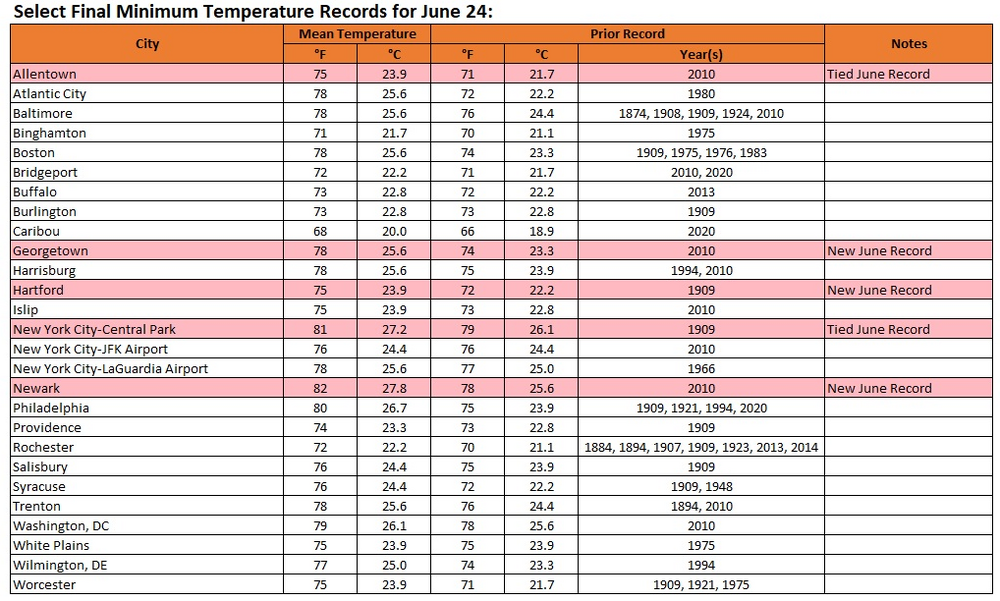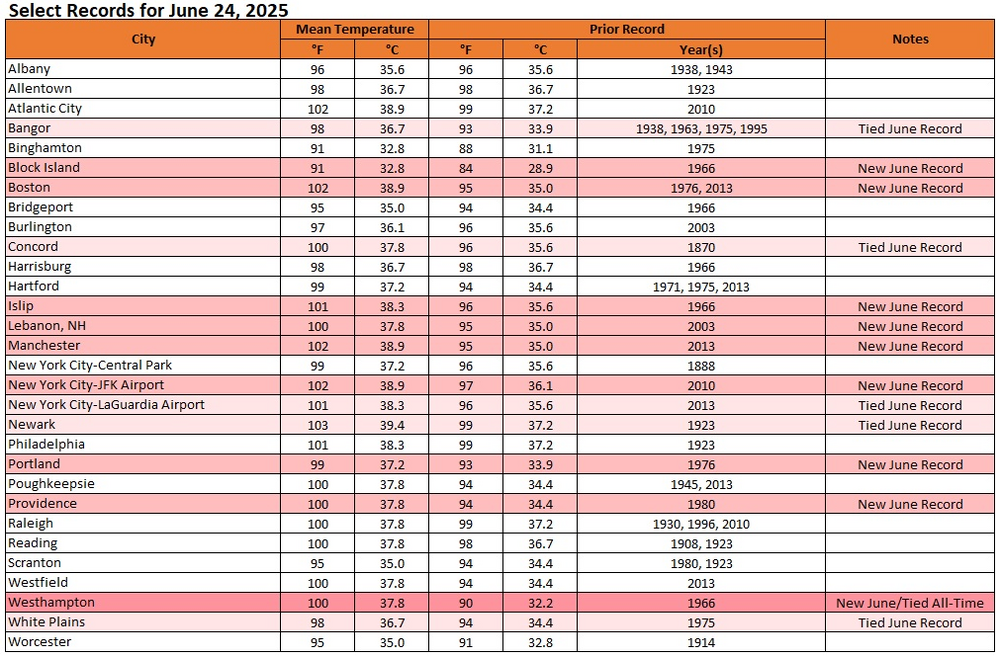Today was a historic day for June. Numerous monthly records were tied or broken. Preliminary high temperatures included:
Atlantic City: 102° (old record: 99°, 2010)
Bangor: 97° (old record: 93°, 1938, 1963, 1975, 1995)
Boston: 102° (old record: 95°, 1976 and 2013 ***New June record***
Bridgeport: 95° (old record: 94°, 1966)
Concord: 100° (old record: 96°, 1870 ***Tied June record***
Islip: 101° (old record: 96°, 1966) ***New June record***
Manchester, NH: 102° (old record: 95°, 2013) ***New June record***
New York City-Central Park: 99° (old record: 96°, 1888)
New York City-JFK Airport: 102° (old record: 97°, 2010) ***New June record***
New York City-LaGuardia Airport: 101° (old record: 96°, 2013)
Newark: 103° (old record: 99°, 1923) ***Tied June record***
Philadelphia: 100° (old record: 99°, 1923)
Portland, ME: 99° (old record: 93°, 1976) ***New June record***
Poughkeepsie: 100° (old record: 94°, 1945 and 2013)
Providence: 100° (old record: 94°, 1980) ***New June record***
Westfield: 100° (old record: 94°, 2013)
Westhampton: 100° (old record: 90°, 1966) ***New June record/tied all-time record***
All said, today is the most extreme June day on record in the New York City area. The five common stations with the extreme heat of June 26, 1952 (Bridgeport, Central Park, JFK, LaGuardia, and Newark) had a mean high temperature of 99.8° vs. the 99.4° in 1952.
One more day of extreme heat is likely tomorrow. Temperatures will likely top out in the lower and middle 90s in much of the New York City area and upper 90s in the hot spots in New Jersey tomorrow. Afterward, it will turn cooler for Thursday through Saturday before temperatures warm again.
The ENSO Region 1+2 anomaly was +1.0°C and the Region 3.4 anomaly was 0.2°C for the week centered around June 18. For the past six weeks, the ENSO Region 1+2 anomaly has averaged +0.47°C and the ENSO Region 3.4 anomaly has averaged -0.03°C. Neutral ENSO conditions will likely continue through at least late summer.
The SOI was +17.57 yesterday.
The preliminary Arctic Oscillation (AO) was +1.610 today.
Based on sensitivity analysis applied to the latest guidance, there is an implied 80% probability that New York City will have a warmer than normal June (1991-2020 normal). June will likely finish with a mean temperature near 73.0° (1.0° above normal).








